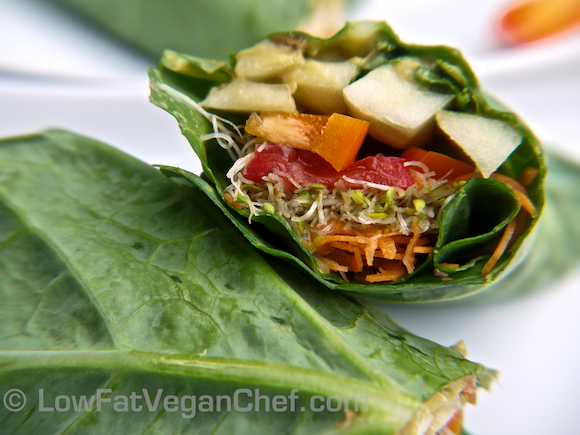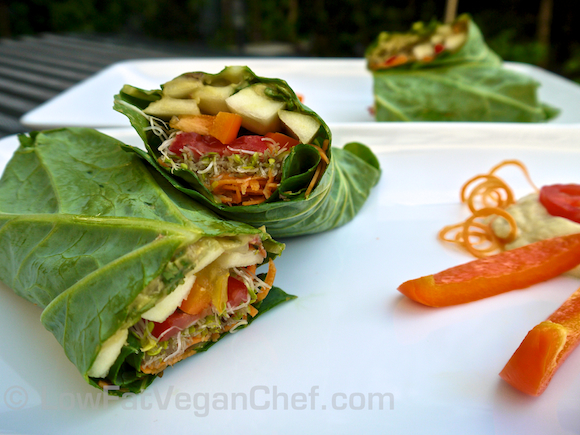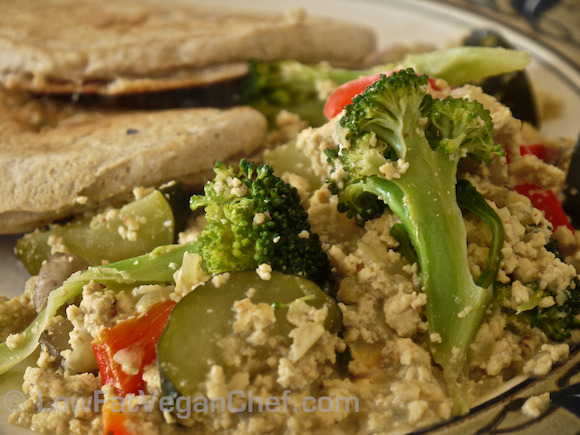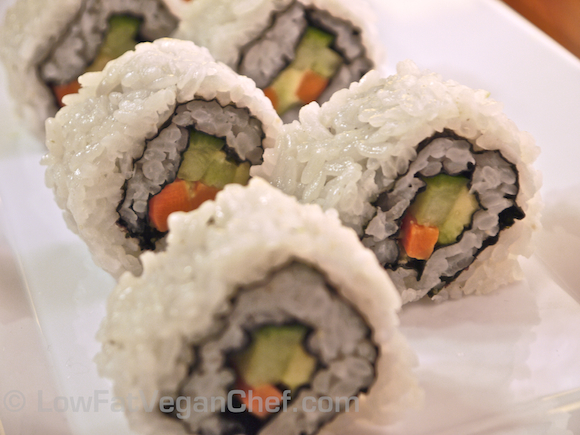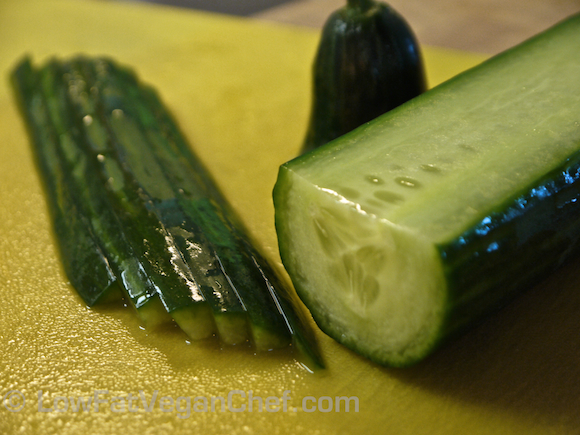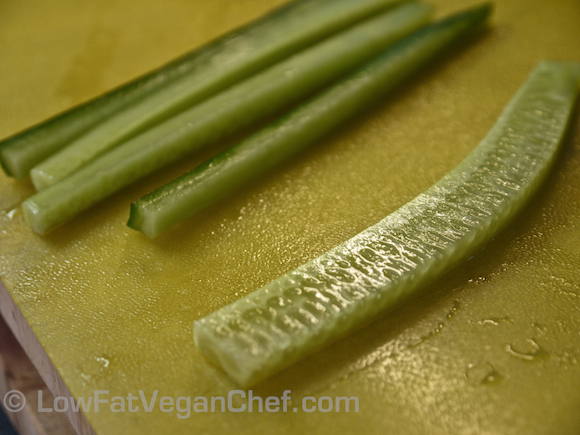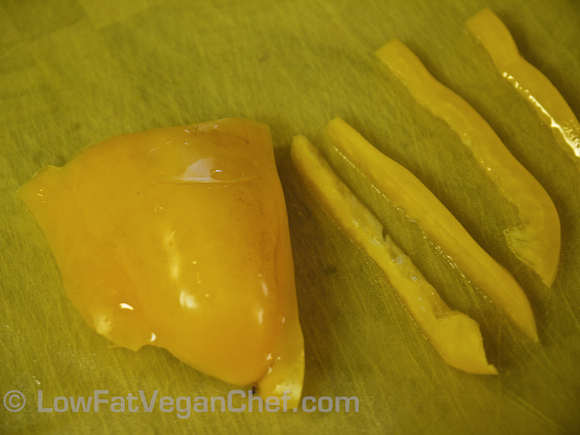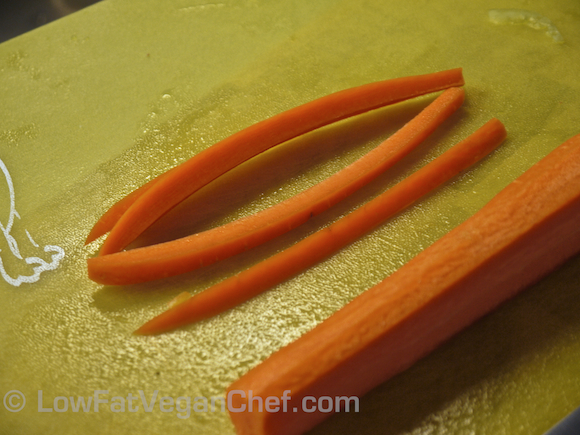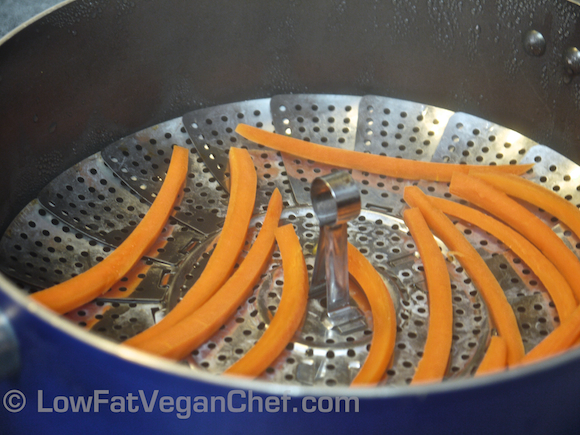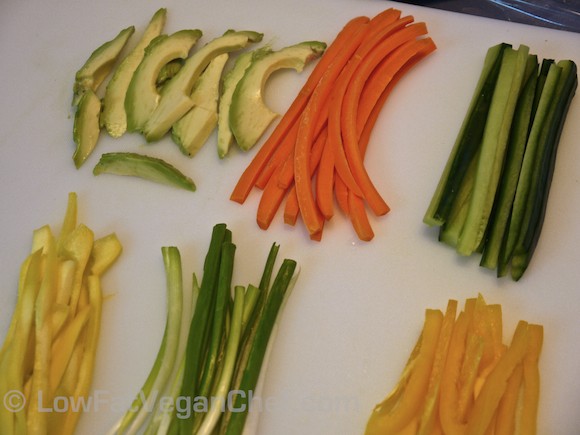Are you looking for a quick and healthy wrap that’s maybe low in calories and more whole foods based? Or maybe you’re looking for a gluten or wheat free sandwich option. Well check out my raw veggie collard wraps!
So… I totally forgot to add these delicious collard wraps to my recipe program Savory Raw Dinner Recipes because they were so easy to make I did not write the recipe down! LOL. When I compiled the recipe book I did not have it on my computer and I forgot about it. So I’m posting it here for you instead. These raw collard wraps are really easy to make if you have access to large size flat collard green leaves and are really impressive to non raw foodies.
If you haven’t checked out Savory Raw Dinner Recipes, I highly recommend you do. I created the recipes and did all the photography myself. These are possibly the sexiest lower fat gourmet recipes you’ve ever seen. Even if you just enjoy some healthy food porn photos, you should check it out!
If you live in the south you can find collard greens at most grocery stores or Walmart, but if you live in the north or in Canada you’ll have to go to Whole Foods or your local community health food store.
In the South it’s about 88 cents (USD) for a bunch of collards. In Canada, it costs us about $2.99 (CAD) for a large bunch. Overall, it’s a pretty cheap wrapper to make a raw burrito or sandwich, just make sure you select a bunch of collards that have lots of large flat leaves, not bent, crushed or small leaves as you’ll more likely end up having to make tiny raw vegan tacos instead because you can’t wrap the collards like a burrito.
If you DON’T have collard greens, it won’t really turn out the same. The key to this wrap is the collard green’s very large, strong and pliable leaf. You can try using other greens, but what you’ll get instead is more of an open face sandwich/taco/boat that you sprinkle toppings in and eat kind of like a hot dog! Probably tastes the same, but will look different. You can try both style of raw wrap.
This is what a collard leaf looks like whole. You will see it’s flat and not curly like kale.
How To Make Raw Vegan Collard Wraps
Serves 2
For this recipe you’re going to need:
2 large collard green leaves, washed
1/2 ripe avocado (should give to your thumb when pressed)
julienned or spiralized carrot and/or beets
julienned cucumber
julienned pepper
julienned zucchini
A few sprouts (If you have, I used alfalfa, you can use sunflower, pea shoots etc)
Seasonings if desired: lime/lemon, salt, pepper, olives
Tools:
A sharp knife
Flat surface
Step 1: Lay your collard leaf out flat on a cutting board stem side facing UP. Next take your sharp knife (it needs to be sharp, and not a serrated one, I cut myself once sawing into my finger) and angle it down and into the stem of the leaf. Shave the stem from the leaf horizontally and away from you. You want to do this so you can roll and fold your collard leaf without it cracking and splitting. Keep shaving down the stem a bit at a time, until it is flush with the leaf and then cut the edge off the stem end so it is straight at the bottom. Test your collard leaf now to see if it will roll easily into a small burrito. If it does, you’ve got your collard stem thin enough. Once you do this once, you’ll understand what I’m talking about.
Step 2: Spread 1/4 of a ripe avocado (half of your 1/2 avocado) onto you collard leaf leaving an inch or two from the bottom end of the stem. Spread it in the middle area only, not all the way out to the sides and top. Season if desired over the avocado for flavour.
Step 3: Lay your veggies and sprouts nicely in the bottom portion to middle of your collard leaf, still leaving and inch or two at the bottom part of the stem. Keep everything in the middle and far away from the top and sides, just like you would fill a burrito.
Step 4: Roll the bottom stem end of your collard leaf up and away from you and make a full roll. Tuck in the sides of the leaf and continue rolling and tucking in as you go. Keep your roll tight so when you cut it your filling doesn’t fall out.
Step 5: Hold your wrap tightly and then carefully slice it in half. If desired you can skewer it with a toothpick to hold it together and set it on a plate.
Step 6: Repeat for the other wrap.
I would recommend sticking with a thick creamy filling like avocado, guacamole or my Lower Fat Hemp Hummus (from Savory Raw Dinner Recipes) instead of using a fruit or vinegar based dressing, as the taste of collards is quite strong and with just a vinegar or lemon base it won’t really be that delicious. Unless you’re like a hard core raw foodist, in which case you probably eat raw kale by the bunchfuls… every day… Just kidding! Rock on! 🙂
Serve this wrap with a raw soup, green salad or fruit salad. This is not a low fat recipe, technically because the veggies and wrap have so little calories. This is why I did not use an entire avocado for the recipe, otherwise it would be very fatty. I want to emphasize that on it’s own this is a very LOW CALORIE wrap, pretty much a snack. Since we don’t want to load up on nuts, seeds and oil on a low fat raw vegan or 80/10/10 diet, this should be part of a meal. We enjoyed this with a fat free soup recipe from Savory Raw Dinner Recipes and lots veggie sticks with my raw hummus. You just can’t see it from the photo, but the soup was present!
I have seen some restaurants steam the collard leaves as well for those who prefer a milder taste (sort of like steamed cabbage in a cabbage roll) so that’s always an option if you’re looking for a softer texture in your wrap!
What do you think of these wraps? What did you fill yours with?

